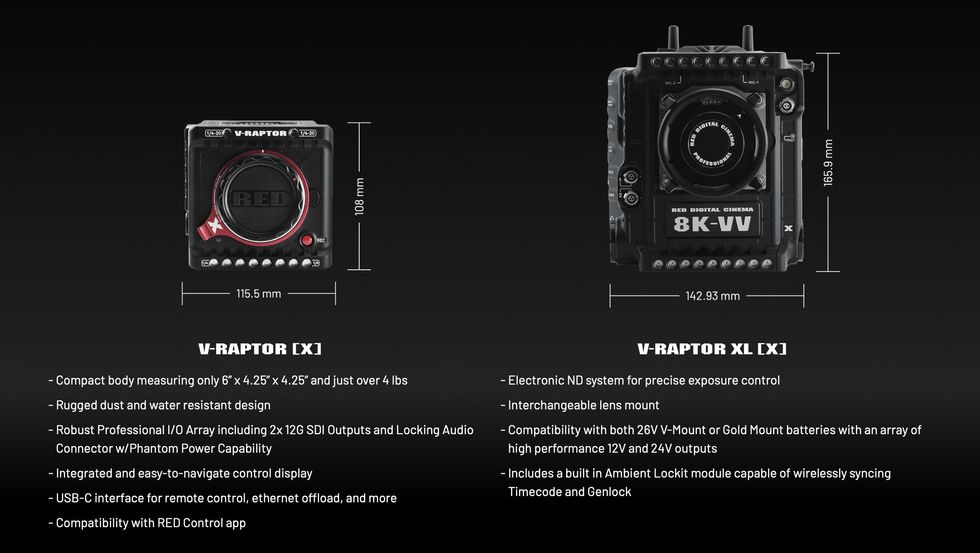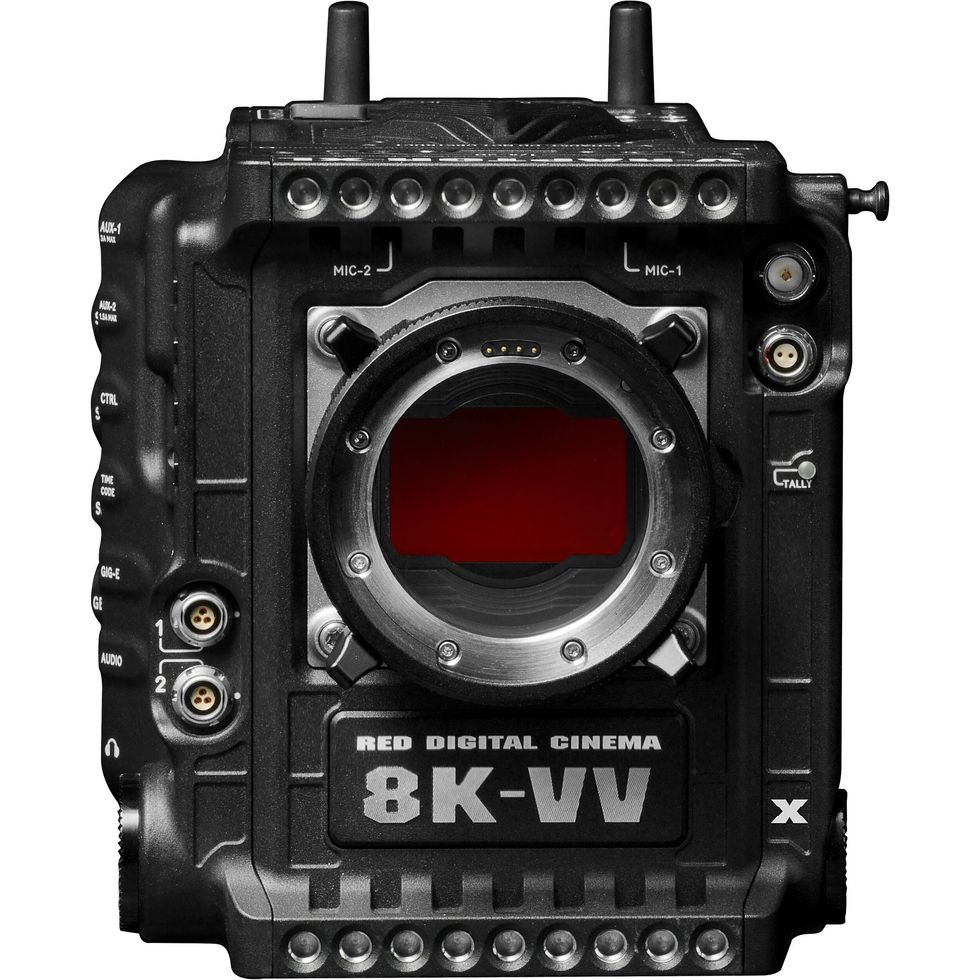
On the heels its collaboration with ARRI, RED has just announced a new camera that takes everything creatives loved about the RED Komodo and puts it in the V-Raptor series.
But that’s just the tip of the iceberg as RED claims a new feature with this camera can give creatives a whopping 20+ stops of dynamic range.
Here’s everything you need to know about the RED V-Raptor (X) and V-Raptor XL (X).
New Cameras, New Upgrade

The new V-Raptor (X) cameras are built upon the original design but contain a completely new global shutter sensor and new internal boards to support the hardware.
While an upgrade plan is currently being offered to original Raptor owners, you’re basically getting a new camera if you opt to use it, as you’re replacing a sizable chunk of the internal hardware.
“Last time we did upgrades, I am pretty sure we lost money off each one,” said RED President Jarred Land. “It’s really expensive to do and it became better for the customer to just use the resale market to get to something new. For X, it’s not just the new sensor but new internal boards as well, so it’s even harder. But we are going to try again…”
Global Shutter, Insane Dynamic Range

The belle of the ball for this release has to be the new 35.4MP global shutter CMOS sensor, which boasts an insane 17+ stops of dynamic range, a max resolution of 8192 x 4320 at 120fps, and a diagonal of 46.31mm.
But the craziest claim is the Extended Highlights feature, which is said to increase the DR of the new sensor to 20+ stops of the dynamic range while maintaining smooth highlight roll-off and solid low-light performance.
This adds 3 stops to the highlight as “highlight protection.” But what kind of sauce RED puts in the mix to make this work is unclear. It feels very similar to the Highlight Recovery feature in DaVinci Resolve.

The addition of Phantom Track is also super cool, which allows filmmakers to capture final pixel and green screen using the same camera. This should help creatives streamline their VFX workflows right on set.
Here are the key features at a glance:
- 8K VV GLOBAL SHUTTER SENSOR – 35.4MP global shutter CMOS sensor with 17+ stops of dynamic range.
- GLOBAL VISION – Extended Highlights protection offers an additional 3+ stops of highlights, while the Phantom Track dual-capture mode offers flexibility in virtual production workflows.
- INTELLIGENT FOCUS – In-camera processing and on-sensor enhanced phase detect autofocus with all-new face-detection.
- UP TO 120FPS @ 8K – High frame-rate performance in a cinema camera to support timelapse, speed-ramping, or for pulling ultra-sharp stills. Can go up to 240fps in 4K.
- INTEGRATED CONTROL DISPLAY – Easy to navigate and intuitive. Allowing for comprehensive controls, including in-camera format selections, customized buttons, and more.
- All-New Audio Architecture – Newly engineered audio hardware provides cleaner and clearer audio when connecting external microphones.
RED DIGITAL CINEMA V-RAPTOR [X] 8K VV

The V-RAPTOR [X] 8K VV Camera pairs the strengths of the RED DIGITAL CINEMA V-RAPTOR line with the advanced global shutter of the KOMODO camera, incorporating the 8K resolution, crisp global shutter, optimal low-light performance, and high frame rate functions in a compact, feature-rich body weighing just over 4 lbs.
On the other hand, the V-Raptor XL (X) will be an interesting option for rental houses, as its price point may be too much for most individual cinematographers (but we’re sure a few exist out there). On paper, these cameras are exciting tools, and we can’t wait to see them in action.
RED DIGITAL CINEMA V-RAPTOR XL [X] 8K VV

With the V-RAPTOR XL [X] 8K VV, RED has introduced its Global Vision suite of tools that uses the global shutter sensor to offer even greater flexibility and ease of use throughout your production process. This camera pairs the strengths of the RED DIGITAL CINEMA V-RAPTOR XL line with the advanced global shutter of the KOMODO camera.
Whatever your needs or feelings about RED are, the company is making some serious hardware to compete in a crowded market. A market that’s filled with loads of affordable cameras that punch well above their weight.
Author: Yaroslav Altunin
This article comes from No Film School and can be read on the original site.
